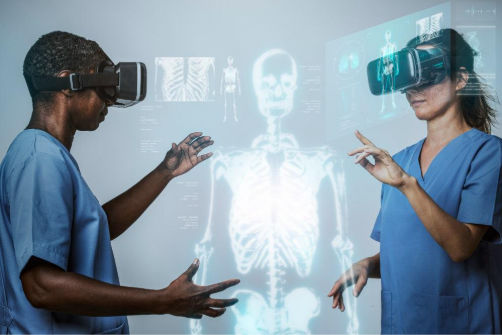Not long ago, the idea of a computer flagging a cancerous spot on a scan such as Ultrasound / CT scan / Xray / MRI scan seemed far-fetched. Fast forward to 2025, and it’s happening—routinely across the globe. Artificial intelligence (AI) is no longer just a buzzword in medicine; it plays a real role in how radiologists work.
A recent report by Roots Analysis pegs the current AI in medical imaging market at around $1.75 billion, with projections suggesting it’ll climb beyond whopping $8.5 billion by 2030. That might sound like one of those inflated tech numbers, but there’s some real scientific verified projections behind it.
Where AI Fits in Right Now
The technology isn’t trying to outsmart doctors—it’s more like a very focused assistant. The AI tools are showing up most in CT imaging, which accounts for over 40% of the new technology use. But the same technology is also being used in MRI, ultrasound, and X-ray workflows, quietly helping radiologists notice things that might otherwise slip by.
A doctor I chatted with put it like this: “It’s not that I don’t trust my read—it’s just helpful to have something that catches what I might overlook after 50 scans in a day.”
That kind of subtle assistance is a big deal. It means faster reports, fewer second scans, and in some cases, patients getting on treatment plans earlier.
So, Why Is This Happening Now?
There’s no single reason—but a few trends are creating a sort of perfect storm for the massive adoption of AI technology in medical field. For one, there’s a shortage of radiologists, especially in regions where the population is aging and imaging demand is spiking. Combine that with an explosion of scan data (driven by advancements in technology devices and lowering of the cost of scans), expansion of reliable internet for faster computing and exchange of information and suddenly, tech support becomes more than welcome—it’s necessary.
Also, AI systems have simply gotten better. They’re learning faster, handling more data, and doing it without requiring hospitals to rip out their old systems.
The Roots Analysis study does a good job showing that this isn’t just about potential—it’s about what’s already working in the field. In fact, AI is already being used in clinical workflows in North America and Europe, with the U.S. currently leading the charge.
Partnerships Are Moving Quietly but Quickly
Much of the momentum in this space isn’t coming from splashy headlines—it’s happening through strategic partnerships.
One example? Enlitic’s collaboration with INFINITT. Their work integrating AI into existing radiology platforms didn’t grab mainstream attention, but it’s exactly the kind of under-the-radar innovation pushing adoption forward.
Interestingly, smaller firms are playing a big role too. While major companies like Siemens and GE Healthcare are investing heavily, many specialized startups are driving niche innovations in areas like neurology. The Roots Analysis report highlights how brain-focused imaging is expected to see the highest AI uptake in the near term.
Challenges Still Exist (And They’re Not Small)
Of course, none of this is without friction. Getting AI to work well in real-world hospital settings means solving bias in datasets, handling patient privacy, and ensuring tech integration doesn’t slow everything down.
One of the more overlooked issues? Training. Many systems perform brilliantly in trials but struggle when faced with the messiness of everyday clinical data. This gap between development and deployment is something that’s getting more attention lately—and rightly so.
If you’re curious about how these obstacles stack up against AI’s potential, Roots Analysis dives into the real barriers and workarounds in their market breakdown.
What’s Coming Next?
Roots Analysis team is projecting that we as consumers are likely to see AI play a bigger role in complex diagnostic areas—neurological scans, early cancer detection, and even emergency triage. But it won’t be splashy. It’ll look more like what’s happening now: quiet integrations that make radiologists faster, more accurate, and (hopefully) less overwhelmed.
There’s also a growing expectation that patients will soon start asking whether AI is involved in their care—not out of concern, but out of trust. That shift in perception could speed up adoption more than anything else.
Source of information: https://www.rootsanalysis.com/

